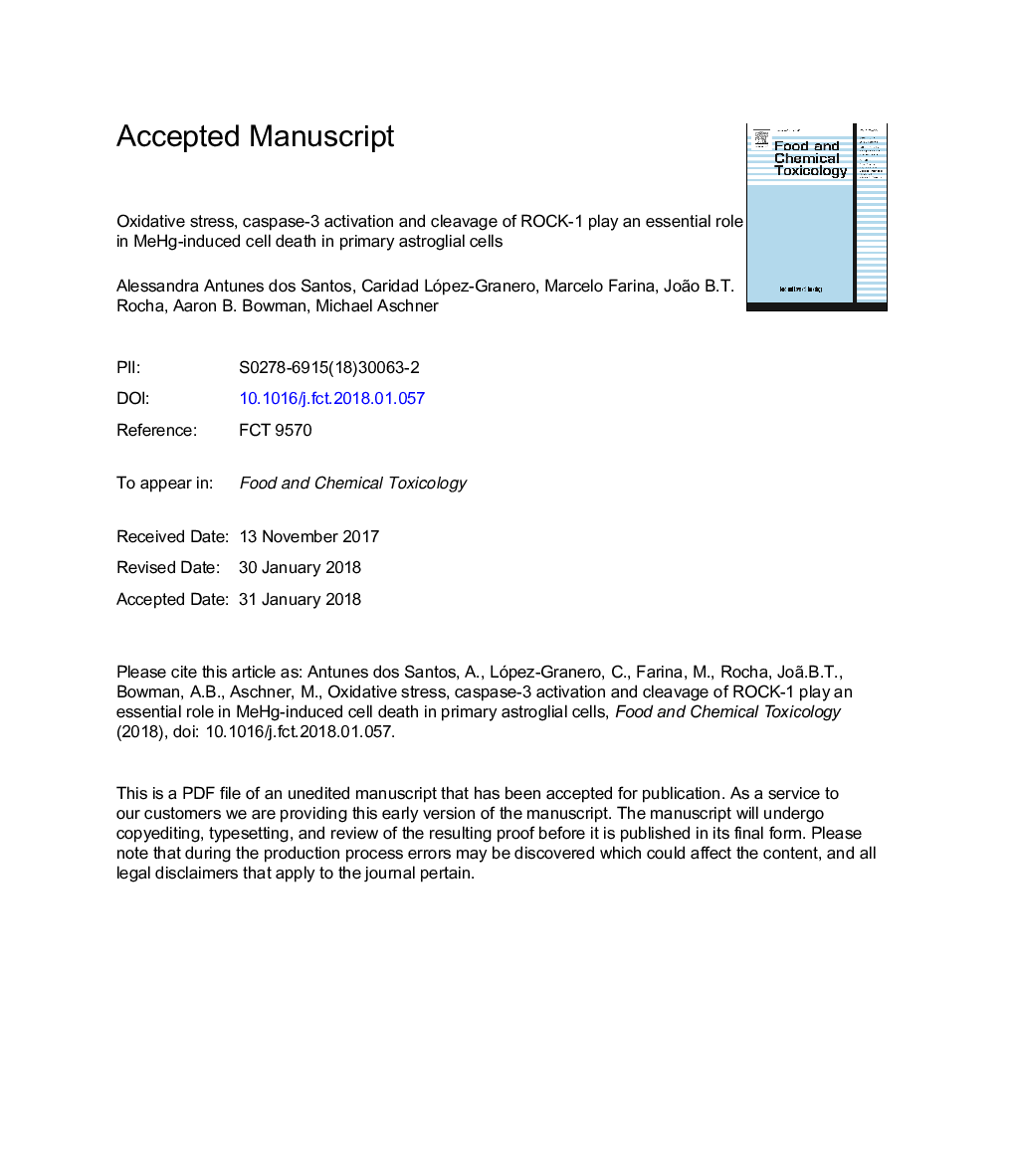| Article ID | Journal | Published Year | Pages | File Type |
|---|---|---|---|---|
| 8548064 | Food and Chemical Toxicology | 2018 | 28 Pages |
Abstract
Methylmercury is a toxic environmental contaminant that elicits significant toxicity in humans. The central nervous system is the primary target of toxicity, and is particularly vulnerable during development. Rho-associated protein kinase 1 (ROCK-1) is a major downstream effector of the small GTPase RhoA and a direct substrate of caspase-3. The activation of ROCK-1 is necessary for membrane blebbing during apoptosis. In this work, we examined whether MeHg could affect the RhoA/ROCK-1 signaling pathway in primary cultures of mouse astrocytes. Exposure of cells with 10â¯Î¼M MeHg decreased cellular viability after 24â¯h of incubation. This reduction in viability was preceded by a significant increase in intracellular and mitochondrial reactive oxygen species levels, as well as a reduced NAD+/NADH ratio. MeHg also induced an increase in mitochondrial-dependent caspase-9 and caspase-3, while the levels of RhoA protein expression were reduced or unchanged. We further found that MeHg induced ROCK-1 cleavage/activation and promoted LIMK1 and MYPT1 phosphorylation, both of which are the best characterized ROCK-1 downstream targets. Inhibiting ROCK-1 and caspases activation attenuated the MeHg-induced cell death. Collectively, these findings are the first to show that astrocytes exposed to MeHg showed increased cleavage/activation of ROCK-1, which was independent of the small GTPase RhoA.
Related Topics
Life Sciences
Agricultural and Biological Sciences
Food Science
Authors
Alessandra Antunes dos Santos, Caridad López-Granero, Marcelo Farina, João B.T. Rocha, Aaron B. Bowman, Michael Aschner,
